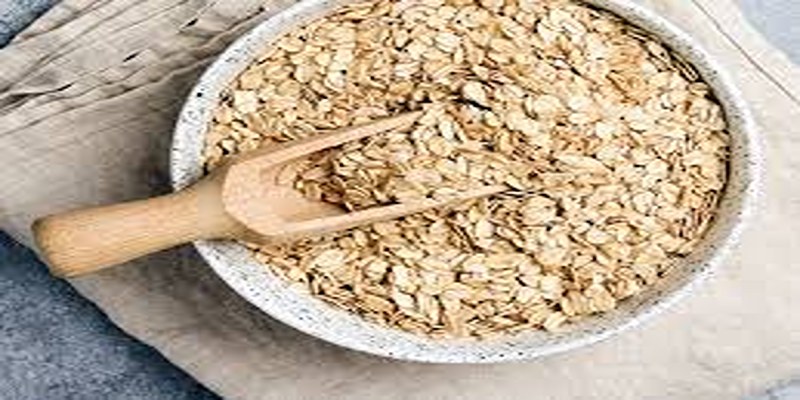Should You Be Eating Only One Meal A Day? Know The OMAD Results
Feb 22, 2024 By Nancy Miller
This weight-loss diet requires one supper every day, which is called one meal a day. The day will be spent avoiding calorie-dense foods and drinks—an intermittent fasting example. There are long stretches without calorie-dense food or beverages and shorter ones. This program uses 23:1 intermittent fasting. Thus, one eats only an hour daily and consumes no calories for 23 hours.
After eating supper, most of those who adhere to this diet fast until the next day's evening. Breakfast may, however, improve glucose regulation for the remainder of the day and decrease the risk of developing type 2 diabetes, according to some research. A contrary conclusion is presented in another source, which posits that for certain individuals, preceding breakfast might be advantageous in regulating their overall caloric intake.
How The OMAD Diet Works?
The food and fluids allowed during OMAD fasting differ from most other intermittent fasting regimes. Although the OMAD diet has no "off-limits" foods, most followers prefer veggies, lean meats, and complete grains. Sugar and cream are prohibited in water, coffee, and tea during the 23-hour fast. Since time limits food intake, the one meal a day diet does not suggest daily calories. Please follow this diet plan to meet your body's metabolic and caloric needs, including the daily energy your cells and organs need.
According to research, the average woman requires approximately 2,000 calories daily to maintain weight. The mean adult male requires an estimated 2,500 calories to sustain their body weight. The quantity of calories needed will differ depending on factors such as activity level, height, weight, and metabolism. Some individuals who adhere to intermittent fasting do so in conjunction with other diets to establish calorie and dietary restrictions. It is frequently combined with low-carb, low-calorie, and ketogenic diets.
Health Benefits Of The OMAD Diet

Intermittent fasting may provide the following prospective advantages:
Fat Loss
The one meal a day diet may impede progress toward weight loss and fat reduction, rendering intermittent fasting less than optimal. Insulin secreted after a meal facilitates protein synthesis or storage within cells. As blood sugar levels fall, hormones secreted during fasting deplete energy stores. Perhaps more efficiently than other diets, interruption fasting can reduce the risk of obesity and increase fat burning. According to studies, the weight loss potential of intermittent fasting ranges from 1% to 3%. Unlike alternative calorie restriction methods, intermittent fasting failed to yield any advantageous outcomes.
Enhanced Good Cholesterol
In the context of hyperlipidemia, "good" cholesterol (HDL) mitigates the risk of cardiovascular disease by eliminating "bad" cholesterols and triglycerides from the bloodstream. Research conducted in 2018 suggests that an empty-stomach fast may increase HDL and decrease LDL. An alternative study by Meng (2020) revealed that intermittent fasting reduces HDL but not LDL and triglycerides. If HDL levels increase, abrupt fasting may reduce LDL levels, reducing cardiovascular disease risk.
Improved Blood Sugar
Glycemic control and infusion may be enhanced by fasting. A gradual release of insulin, which stores energy, is facilitated by reducing omad meal plan intake. Prolonged insulin delivery to cells removes glucose from circulation after a day of snacking. Insulin resistance, which this may induce, could be prevented with fasting. According to scientific research, intermittent fasting reduces fasting insulin and glucose levels. Before attempting intermittent fasting, individuals with diabetes should consult a physician.
Cons of Eating One Meal a Day
As stated previously, individuals who are pregnant or nursing, under the age of 18, using insulin to manage diabetes, have a history of eating disorders or are on food-dependent medications should not adhere to the Omad results protocol. Moskovitz advises people with diabetes to consult with their physician before beginning OMAD, as consuming one substantial meal per day may result in an unhealthy blood sugar spike.
Contrary to anecdotal reports from some individuals proposing that one meal a day enhances gastrointestinal function, others have received opposing accounts. According to Moskovitz, not everything will likely be properly metabolized or broken down with so much in the stomach at once. Immediately after consuming this enormous meal, you may experience nausea.
Furthermore, individuals may encounter an insatiable hunger pang while anticipating the arrival of their solitary daily meal. This may lead to an excessive desire for less nutritious foods and an inclination to overeat during meals. Additionally, any food item is permissible during this meal or dining window. Nevertheless, this does not hold, especially when the goal of your OMAD regimen is to improve your overall well-being.
Effect On Diabetes And Cholesterol Levels

Individuals who have inherent medical conditions may be exposed to supplementary hazards. To maintain a constant blood sugar level, individuals with type 1 diabetes or low blood sugar, for instance, must consume meals daily. In 2007, a reliable source compared the impact of consuming an equivalent number of calories across three meals per day for six months on a cohort of healthy adults.
While no participant underwent a substantial weight change, individuals who adhered to a single-meal-per-day regimen observed decreased fatty tissue. Nevertheless, an elevation in low-density lipoprotein (LDL) and high-density lipoprotein cholesterol levels was observed, adversely impacting the individuals' morning glucose tolerance levels.
Metabolism and Body Clock Genes
A 2012 research on mice by a reliable source suggested that consuming only one meal a day could be detrimental to health compared to consuming two meals. Rats fed a single meal daily exhibited elevated body fat, insulin, and body weight levels. Additionally, oxidative injury in fatty tissue and the liver was more likely to occur.
According to the researchers, consuming a single meal daily may harm the genes regulating the body's rhythm, sleep-wake cycles, and metabolism. Alternating daily for an entire year, 100 individuals consumed 25% of their energy requirements in food on one day of the omad results and 125% on the next, according to a 2017 study cited in another reliable source. However, their daily consumption was not restricted to a single meal.
LDL, or "bad," cholesterol levels rose among those who engaged in this particular form of intermittent fasting. Extremely elevated LDL cholesterol levels may elevate the likelihood of developing hypertension, cardiovascular disease, and stroke. Additionally, those who abstained this way lost no more weight than those who reduced their daily caloric intake through an omad meal plan.

5 Focal Points to Understand the Emotional Toll of Traumatic Injury

Is It Safe to Work Out While You're Fasting: All you Need to Know

Post-Root Canal Care: Essential Tips for Optimal Tooth Recovery

Ready to Challenge Yourself? Try These 15 Unique Plank Variations!

Understanding High Triglycerides

Excessive tomato consumption? Avoid these discomforts at all costs.

Exploring the Health Benefits of Pickled Beets: Nutrition and Wellness Guide


